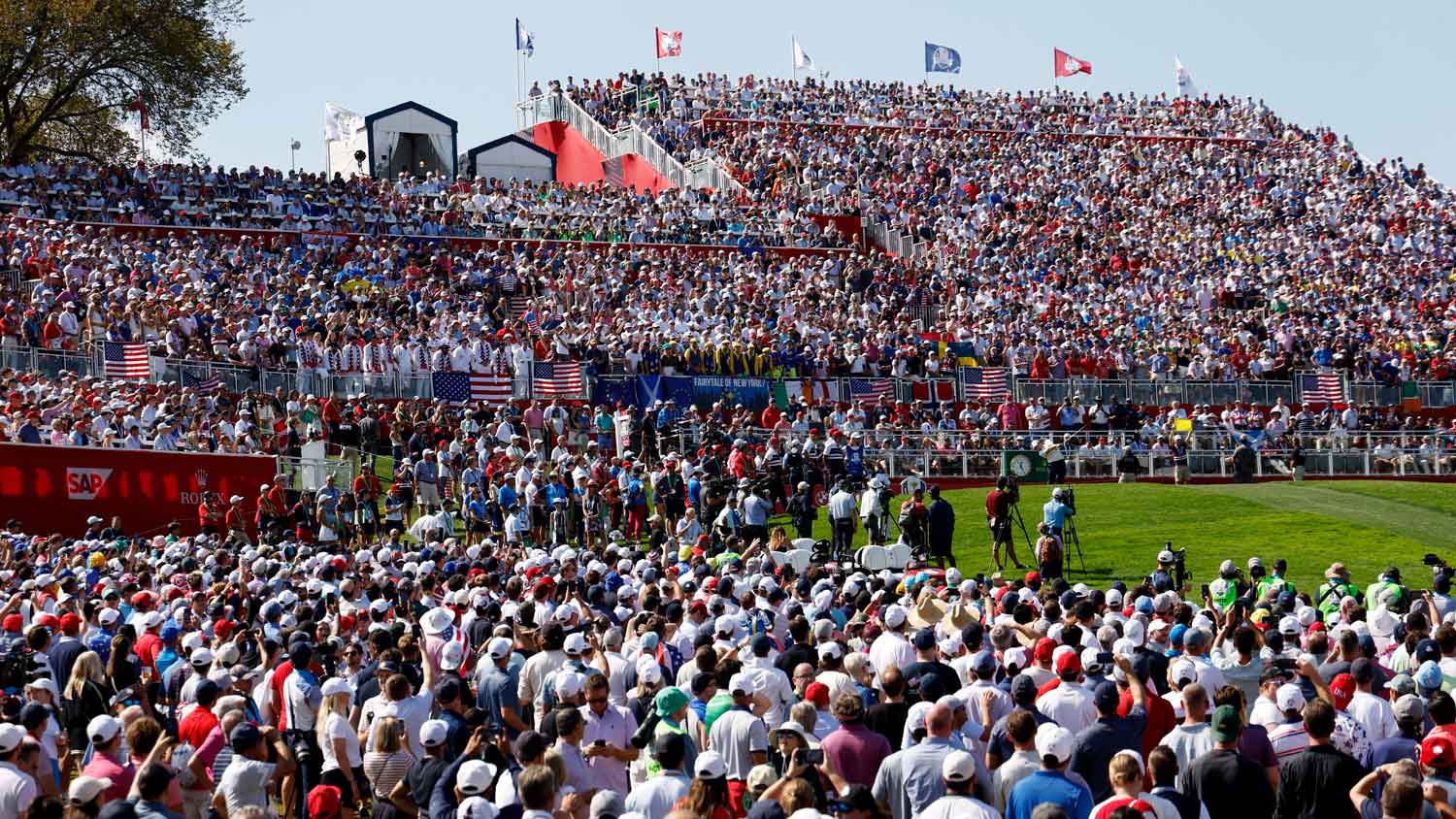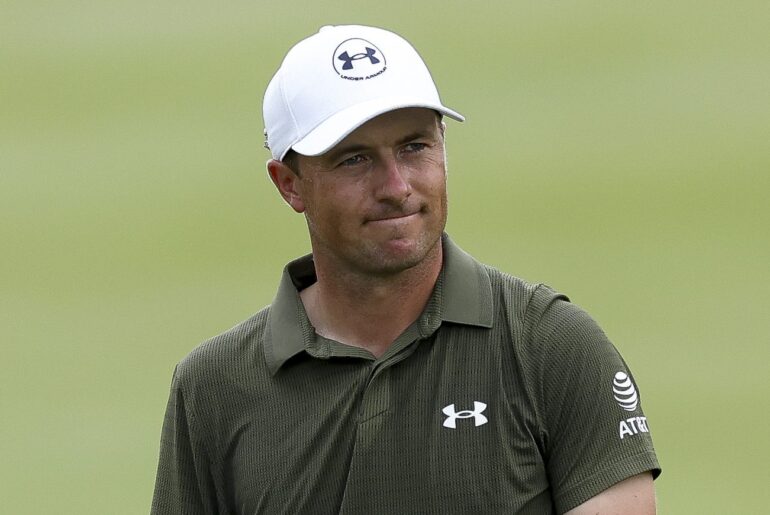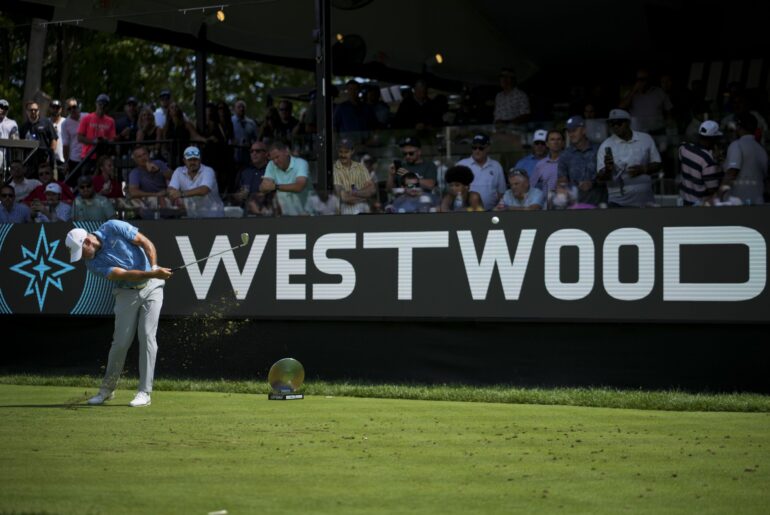Golf sank its teeth into me for the first time as a 10-year-old.
It was June 2008, and I was seated on a plush brown leather couch between my father, who believed Tiger Woods was destined to win on Sunday at the U.S. Open at Torrey Pines, and my grandfather, who did not. Suddenly, the 50-inch Samsung “flatscreen” in the corner (an bulky hybrid edition of the razor-thin screens that now fill our lives) flashed with a highlight, and my grandfather screamed.
“C’MON ROCCO!!!”
That famed battle between Woods and Mediate at Torrey Pines is scorched into my memory like the sear of a well-done steak. The drama of golf’s David and Goliath in the ring for what felt like 20 heavyweight rounds. The heart-stopping exhilaration on the 72nd hole with the national championship on the line. Woods’ eventual victory by virtue of a half-dozen of the most remarkable golf shots I’d ever seen (and ever would).
For a long time in my life, I thought myself unique for this memory, fortunate to be a golf fan born under the lucky star of a childhood in the height of Tiger Woods. But according to a new analysis from the New York Times‘ Seth Stephens-Davidowitz, the opposite might have been true: I might have been a golf fan precisely because my childhood overlapped with the height of Tiger Woods.
According to an analysis of Facebook fan data reviewed by Stephens-Davidowitz, an American data scientist and economist, a heavy correlation exists between athletic success witnessed in boyhood and the later development of rabid fandom. In fact, according to Stephens-Davidowitz’s analysis, championships witnessed by boys between ages eight and 12 were associated with the greatest increase in the development of rabid fandom, in some cases two or three times more likely to result in rabid fandom than championships experienced at other ages in childhood development.
Some caveats: Stephens-Davidowitz’s analysis was confined to baseball teams, and did not look into the changes in fandom associated with championships in other team sports, or fandom in individual sports like golf. Interestingly, Stephens-Davidowitz’s analysis also failed to find a similar correlation between young girls and the development of rabid fandom, finding their allegiances were less affected by team success.
Still, on the whole, Stephens-Davidowitz’s analysis (which you can read in full here) presents a fascinating glimpse into the behavioral psychology of sports fandom, and provides interesting cues for sports leagues hoping to bolster their fandom. For golf, which has subjected itself to a nauseating degree of “grow the game” discourse over the last decade, the biggest takeaway might be that many of the efforts to engage with teenage and twentysomething audiences might be overstated. Michael Mulvihill, president of FOX Sports’ insights and analytics team, summarized the toplines:
“Tremendous piece of research here that aligns with similar work we’ve done on how MLB/NFL fans are minted,” Mulvihill wrote. “As an industry sports badly overvalues marketing to young adults and undervalues kids and pre-teens. If you don’t have them by 14 you’re probably never getting them.”
Interestingly, golf has historically benefited by reaching fans later in life. Pro golf’s competitive oddities resist the easy tribalism of team sports that might appeal to younger fans (no teams, no “home games,” a deeply rooted sense of individuality), while its participatory oddities tend to far outlast the same benefits offered by team sports (with good health, you can play at the site of Tiger Woods’ 2008 U.S. Open win well into your eighth decade). Golf also has the benefit of serving a distinct social utility relative to other sports: Those who can play the game at a semi-competent level can leverage their golf abilities into professional opportunities, meaning golf can literally be the key to a more prosperous life.
But, on the topic of youth engagement, golf sits well behind more popular sports like soccer and basketball. Even in places with thriving junior golf programs, participation numbers pale in comparison to other major sports (4 million junior golfers in the U.S. in 2024, compared with 14.1 million junior soccer players), which is to say nothing of the gap in pro fandom of the kind measured in the Times analysis.
The lesson for golf might be simply that it should aim younger. The sport’s efforts to build in younger audiences via programs like TGL and LIV have laser-focused on comparatively older sports fans (particularly those in the coveted 18-35 demographic). While both leagues have found some success in engaging different demographics, neither has crossed the threshold of being definitively “additive” to golf’s broader audience. Perhaps the Times analysis provides a glimpse into why: By the time those golf fans are reached by TGL and LIV, they’ve already passed their most impressionable years as fans.
For golf, there might not be any easy answers. Yes, it’s a great idea to invest heavily in youth golf, which programs like the USGA’s U.S. National Development Team have helped spotlight in recent years. And yes, from the pro golf standpoint, it’s also a great idea to have as many high-leverage moments involving as many transcendent talents as possible (of the many headaches caused by LIV’s fracture, the lack of must-watch tournaments might be the most painful).
But even with the best players in the world in the highest-leverage events, only so many golf tournaments can be true thunderbolts. Every kid wants to root for a star athlete, just as every kid wants to see their hometown team win. The trouble is that there is a shortage of both star golfers and hometown championship teams. It’s easy to say golf should simply mint more stars, but the truth is that stars mint themselves by winning in unusual ways or with unusual frequency. In this case, pro golf’s greatest strength might be its biggest vulnerability: It cannot be faked. If every event reached the threshold of Tiger and Rocco in 2008, none would.
The good news, though, is that some can. It is not hard to see how Rory McIlroy’s mind-bending Grand Slam-clinching victory at the Masters in April might have ushered in a new era of golf superfans. Nor is it hard to see how Scottie Scheffler’s gentile brand of annihilation might prove particularly intriguing to a young sports fan in the market for a role model. You do not have to spend long talking to today’s youngest crop of pro golf stars to hear stories of their own lightning bulb moments. Nearly all involve Woods or Mickelson, and nearly all arrived before the teenage years.
In 2008, that was how it looked to grow the game: A boy and a superstar and an underdog and a nail-biting story.
In 2025, the story hasn’t changed. But the maybe the audience should.







